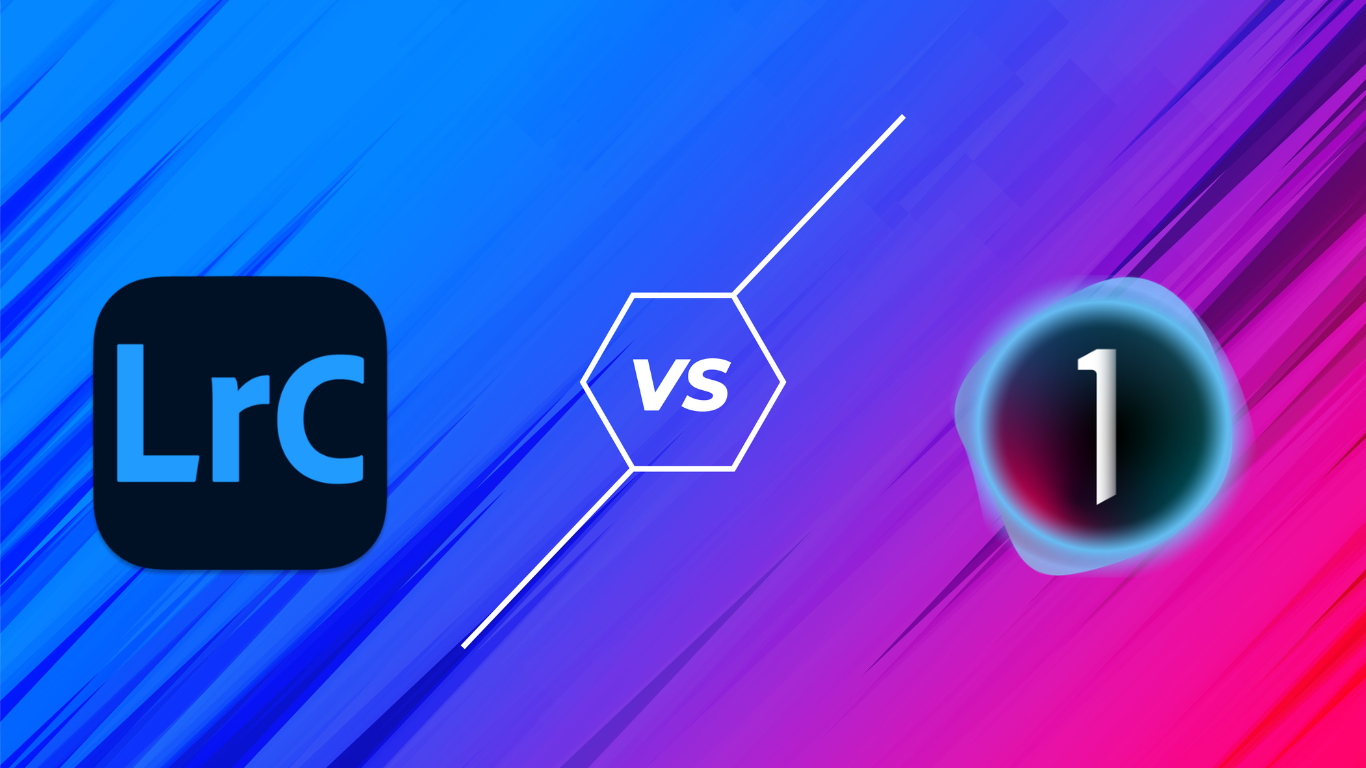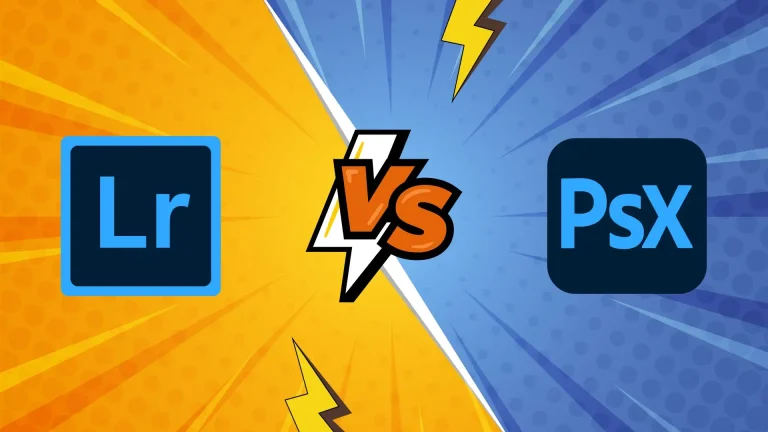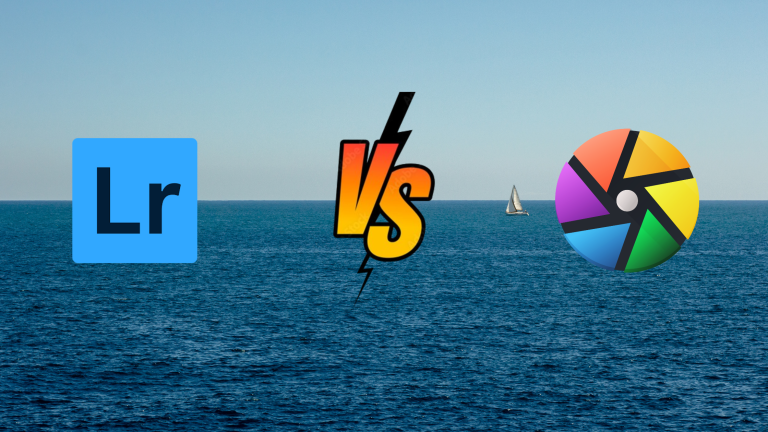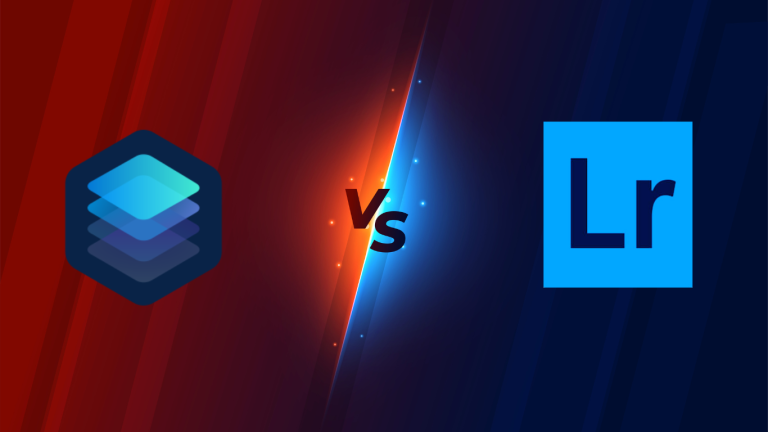Capture One vs Lightroom: Which is Right for You?
There is nothing wrong with saying that photo editing software is vast. But, two titans consistently dominate the conversation: Capture One and Lightroom.
Both offer robust toolsets and cater to different photographic styles and workflows.
However, selecting the right software can significantly impact your post-processing efficiency and the final look of your images.
This comparison blog aims to shed light on the key distinctions: Capture One vs Lightroom.
So keep reading if you want to make an informed decision based on your specific needs
First Thing First
Before diving into software specifics, it’s important to assess your photography goals.
Consider the following factors:
- Your experience level (professional or hobbyist)
- Camera compatibility
- Desired image quality
- Workflow preferences (tethering, cataloging, editing)
- Last, but not least, your budget
Now, let’s move toward a brief overview of each software.
Capture One Review
Capture One excels in raw file processing, delivering exceptional color accuracy and detail.
It offers advanced editing tools and is particularly strong in tethering capabilities.
Don’t forget – it comes with a steeper learning curve and a higher price tag compared to Lightroom.
Lightroom Review
Lightroom prioritizes user-friendliness and efficient library management.
Its cloud integration and AI-powered features make it a popular choice for photographers – the condition is you’re looking for a streamlined workflow.
Note this – while its raw processing capabilities might not match Capture One’s, Lightroom provides a wide range of editing tools.
Feature Comparison: Capture One vs Lightroom
Raw Processing
Raw processing is the foundation of any image editing workflow.
And – both Capture One and Lightroom excel in this area.
However, they approach raw files differently.
Look at this table to draw the comparison easily!
| Feature | Capture One | Lightroom |
| Raw File Handling | Renowned for exceptional raw file handling | Effective but not as celebrated for raw processing |
| Image Quality | Outstanding image quality with exceptional detail preservation | A strong foundation for raw development |
| Dynamic Range | Exceptional dynamic range | Excellent dynamic range recovery |
| Noise Reduction | Granular control over various aspects of raw development | Effective noise reduction |
| Interface | Allows photographers to fine-tune images with precision | User-friendly interface |
Cataloging and Organizing
Efficient cataloging and organizing of image libraries is crucial for photographers with large collections.
If we see Capture One vs Lightroom, both software packages offer robust organization features, but with distinct approaches:
- Capture One
It focuses on a session-based workflow, allowing photographers to import and manage images within specific projects.
While it offers powerful organization tools, it might not be as intuitive as Lightroom for some users.
- Lightroom
Uses a catalog-based system, providing a centralized location for managing and organizing entire image libraries.
Its intuitive interface and powerful search functionality make it a popular choice for photographers with large collections.
Black and White Conversion
Creating compelling black-and-white images requires careful attention to tonal contrast and texture.
Both software packages provide tools for black-and-white conversion, but with varying degrees of sophistication.
Let’s look into it:
- Capture One
This software offers a dedicated black-and-white toolset with:
- Advanced controls for tonal adjustments
- Split toning
- Grain simulation
This level of precision allows photographers to create highly customized black-and-white images.
- Lightroom
Provides a simpler approach to black-and-white conversion with basic tonal adjustments and presets.
It might not match Capture One’s level of control, but it still produces good results for most users.
Lens Corrections
Correcting lens distortions and chromatic aberrations is crucial for achieving sharp and accurate images.
Both software packages include lens correction profiles for a wide range of lenses.
The table below will help you draw the comparison on Capture One vs Lightroom for lens correction.
| Feature | Capture One | Lightroom |
| Lens Correction Profiles | Extensive lens correction profiles | Solid lens correction module with automatic profiles for many lenses |
| Manual Adjustments | Tools for fine-tuning lens corrections for optimal image quality | Allows for manual adjustments if needed |
Noise Reduction
Effective noise reduction is essential for maintaining image quality at high ISO settings.
Both software packages offer noise reduction tools, but with different approaches.
- Capture One
Uses advanced noise reduction algorithms that preserve image detail while reducing noise.
It provides granular control over noise reduction settings, allowing photographers to fine-tune the process for optimal results.
- Lightroom
This software package offers a capable noise reduction tool that effectively reduces noise while maintaining image detail.
Plus, it provides a balance of simplicity and effectiveness.
Color Editing
Accurate and versatile color editing is essential for achieving desired looks and moods.
Both software packages offer comprehensive color tools, but with distinct approaches.
- Capture One
It features a powerful color editor with advanced features like:
- Color curves
- Split toning
- Selective color adjustments
It excels in producing vibrant and accurate colors.
This makes it a preferred choice for photographers who demand precise color control.
- Lightroom
The Lightroom provides a more streamlined color editing experience with intuitive sliders and presets.
While it might not offer the same level of granular control as Capture One, it still delivers excellent results for most photographers.
Cloud Storage and Syncing
Cloud-based storage and syncing are essential for modern photographers who need to access their images from multiple devices.
Both software packages offer cloud-based solutions, but both have different features and limitations.
- Capture One
Integrates with cloud storage services like Capture One Cloud and Adobe Creative Cloud.
This allows photographers to store and sync images across devices.
However, its cloud features are relatively limited compared to Lightroom.
- Lightroom
Offers extensive cloud integration with Adobe Creative Cloud.
Thus, it enables seamless syncing of images, presets, and collections across desktops. Plus, the Capture One mobile device facility is also available.
Lightroom’s cloud-based features are more robust and user-friendly.
Tethering
Tethering allows photographers to capture images directly to a computer for real-time review and editing.
Both software packages support tethering, but have different levels of functionality.
- Capture One
Widely regarded as the industry standard for tethering, Capture One offers:
- Exceptional stability
- High speed
- A wide range of features
This makes it the preferred choice for professional photographers who rely on tethering.
- Lightroom
Provides basic tethering capabilities, but it might not be as reliable or feature-rich as Capture One.
Don’t worry, it’s suitable for occasional tethering needs.
Still, it might not be the best choice for professionals who rely heavily on this feature.
Pricing
The pricing of software is a crucial factor for many photographers.
Capture One vs Lightroom: both offer different pricing models.
- Capture One
Generally has a higher price point than Lightroom, but it often includes more features and advanced tools.
It offers perpetual licenses as well as subscription options.
- Lightroom
Typically has a lower entry point, especially when bundled with other Adobe Creative Cloud applications.
It’s primarily available through a subscription model.
Use Cases: Lightroom Vs Capture One
Understanding the ideal use cases for each software is important to make the right choice.
No donut, both Capture One and Lightroom are powerful tools, but, they cater to different photographic needs and workflows.
When to Choose Capture One
Capture One is often the preferred choice for photographers who prioritize:
- Image quality
- Precision
- Advanced editing capabilities
Here are some specific use cases:
- Professional Photographers
Professionals often choose Capture One due to is superb raw processing, color accuracy, and sophisticated features.
Capture One is frequently a perfect choice for photographers who require the best possible image quality for their clients—such as commercial, fashion, or portrait photographers.
- Commercial Photography
For commercial work, the capacity to create sharp color renditions and high-quality photographs is vital.
Capture One is a good option for this genre because of its color editing features and tethering capabilities.
- Portrait Photography
For portrait photographers, the capacity to maintain skin tones and minute details is essential.
Retouching and compositing are also made more flexible by its sophisticated masking and layer-based editing features.
- Fashion Photography
The demand for flawless skin tones, vibrant colors, and detailed images is high in fashion photography.
Capture One’s advanced color editing and retouching tools can help photographers achieve the desired look.
- Users Requiring Advanced Color Editing and Tethering
Photographers who demand precise color control and rely heavily on tethering will find Capture One’s feature set to be invaluable.
Its color editing tools offer a high degree of customization.
Plus, its tethering stability and speed are unmatched.
When to Choose Lightroom
Lightroom is a versatile software package that excels in:
- Image organization
- Management
- Basic editing
It’s a good choice for photographers who value user-friendliness and efficiency.
Here are some specific use cases:
- Hobbyists and Enthusiasts
Lightroom’s intuitive interface and comprehensive feature set make it an excellent choice for photographers who are just starting out.
It’s also valuable for those who primarily enjoy photography as a hobby.
- Users Prioritizing Cloud Integration and Library Management
Lightroom’s robust cloud integration and powerful library management tools make it a popular choice for photographers.
This relates to accessing and organizing large image collections across multiple devices.
- Photographers Seeking a User-Friendly Experience
If you prioritize a streamlined workflow and easy-to-use interface, Lightroom is a strong contender.
Its straightforward approach to editing and organization can save time and effort.
It can be more helpful for two kinds of photographers:
- Event and Wedding Photographers
Quickly sorting through and selecting images from large volumes of photos is essential for event and wedding photographers.
Lightroom’s efficient organizational tools can streamline this process.
- Travel and Landscape Photographers
These genres often involve capturing and managing large numbers of images.
Lightroom’s cataloging and organizational features can help keep your library organized and accessible.
Capture One Pro vs Lightroom: Free and Premium Versions
While neither Capture One nor Lightroom offer fully-fledged free versions, both provide ways to experience their software without upfront costs.
Let’s know the differences between their free trials and premium offerings.
Capture One: Free Trial vs Premium
Free Trial:
Capture One provides a free trial period.
It allows users to explore its features and capabilities before committing to a purchase.
The trial version typically includes:
- Access to basic raw development tools. Helps adjust exposure, white balance, and contrast.
- Images edited with the trial version often carry watermarks.
- A subset of editing tools – basic adjustments, cropping, and straightening.
Note this – the trial period is usually limited to a specific timeframe.
Capture One Premium:
The premium version of Capture One unlocks the full potential of the software.
It provides access to all features and tools:
- Comprehensive raw development capabilities, including advanced noise reduction, lens corrections, and color adjustments.
- Access to a library of professional-grade presets and styles to enhance image appearance.
- The ability to connect a camera directly to a computer for live view and remote shooting.
- A wide range of editing tools, such as layers, masks, curves, and selective adjustments, for precise image manipulation.
- Premium users benefit from regular software updates with new features and improvements.
Lightroom: Free vs Premium (Adobe Photography Plan)
Lightroom Free (Lightroom Mobile):
Adobe offers a free mobile version of Lightroom, accessible on smartphones and tablets. This version provides a basic photo editing and organization experience:
- Essential editing tools like cropping, exposure adjustments, and filters.
- A selection of mobile-optimized presets.
- Limited cloud storage for syncing photos across devices.
Note this- Compared to the desktop version, Lightroom Mobile offers a reduced feature set.
Lightroom Premium (Adobe Photography Plan):
The Lightroom Premium APK, included in the Adobe Photography Plan, provides a comprehensive photo editing and management solution:
- Seamless integration between desktop and mobile versions.
- Access to the classic Lightroom desktop application for traditional library management and editing.
- Premium users benefit from regular software updates with new features and improvements
- Generous cloud storage for backing up and syncing photos.
- Access to a full suite of editing tools, including advanced raw processing, selective adjustments, and masking.
- Integration with Adobe Photoshop for advanced pixel-level editing.
| Important Note! Although it may seem appealing to get free access to Lightroom premium features, random searching for “Lightroom mod APKs” is risky. These altered versions frequently don’t have security safeguards, which puts your device at risk of malware infection or compromises your data. |
Key Differences: Capture One vs Lightroom
Making it convenient to understand, here’s a comparison table highlighting the key differences – Lightroom vs Capture One:
| Criteria | Capture One | Lightroom |
| Platform Availability | Primarily focuses on desktop applications | Offers both desktop and mobile versions |
| Feature Set | More advanced feature set, especially in raw processing and advanced editing tools | User-friendly interface, stronger cloud integration |
| Pricing Model | Offers perpetual licenses and subscription options | Primarily subscription-based |
FAQs
In short
From the Capture One vs Lightroom comparison, we can conclude that it depends largely on your specific needs as a photographer.
Capture One excels in raw processing, color accuracy, and advanced editing tools. So it’s a preferred choice for professionals demanding top-tier image quality.
On the other hand, Lightroom offers a user-friendly interface, robust library management, and cloud integration. It caters to a wider range of photographers, including hobbyists.
Ultimately, the best way to decide is to experiment with both software and find the one that aligns best with your workflow and creative vision.







